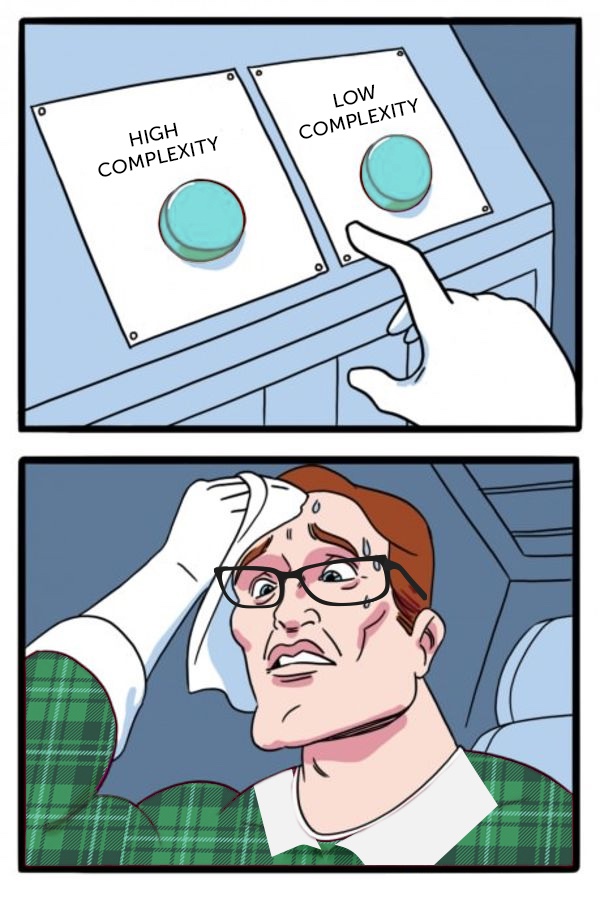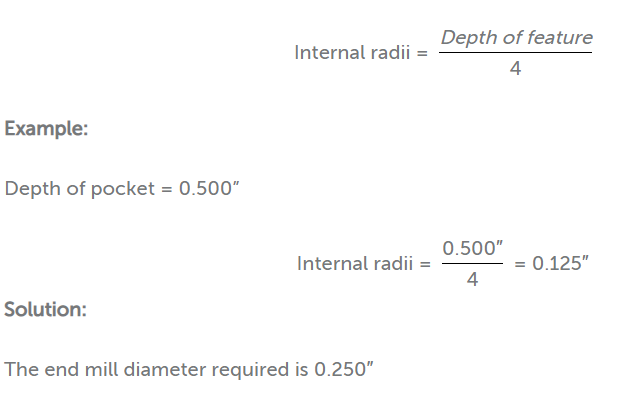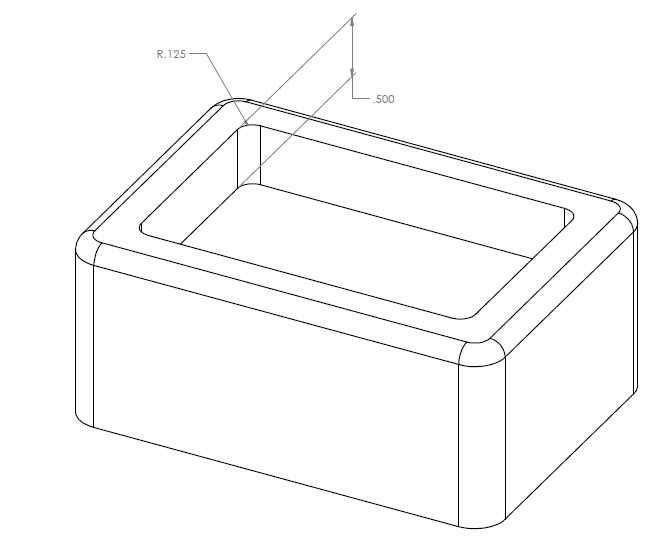Time to read: 10 min
Index
What is a complex part?
Why should you use CNC machining for creating complex parts?
1. Machine Cutting Axes
2. Cutting Tools and Part Features
3. Tolerancing and Surface Finishing
4. Work Holding
CNC Milling
Design for manufacturability
Tolerance and surface finish capability
CNC Turning
Live tooling v. non-live tooling
Tolerance and surface finish capability
EDM
Tolerance and surface finish capability
Complex Parts at Ridiculous Speeds
Across the manufacturing industry and over the past few decades, innovations in technology for CNC milling, turning, and wire EDM have allowed for highly complex geometries to be machined with ease. In this article, we discuss the types of complex parts you can fabricate and manufacture using CNC — and how Fictiv can manufacture your custom CNC parts, on demand.
It’s critical to know how CNC machining works before you design a part to be CNC machined. Design for manufacturing (DFM) requires thorough knowledge of the CNC machining equipment’s capabilities, and if you want to learn more check out our DFM for CNC Machining webinar, which provides tips and insights to help you optimize your designs!
Advanced manufacturing techniques like CNC milling and CNC turning, with their precise CNC machining tolerances, make machining complex parts possible. But best practices, including the careful consideration of CNC tolerances, must always be considered to keep the project cost-effective. In this article, we’ll explain these practices and demonstrate how these advanced machining techniques let us produce even the most complex parts.
What is a Complex Part?

Complexity is a key consideration in CNC part manufacturing since it’s among the biggest cost and lead time drivers — complex parts take more skill and time, after all. What makes a part complex? You may have tried to reduce complexity or you may be struggling with figuring out how complex your part is. In general, complexity is dependent on part size, weight, non-standard features, tolerancing, wall thickness, surface curvature, and part finishing.Understanding the complexity of your part isn’t straightforward. So, we created a quiz that makes it easy to find out how complex your part is — which tells you how easy (or complex) it is to manufacture. Take the quiz here!
Why Use CNC Machining to Manufacture Complex Parts?
To understand “why” CNC machining is well-suited to making complex parts, we must first understand the capabilities of modern-day manufacturing technologies. A majority of CNC machines have been around for decades and their improved efficiency and operation have advanced the capability of CNC machining complex parts. CNC machines are excellent for creating complex parts for many reasons, including their operation, tolerancing, and surface finish capabilities.
Machine Cutting Axes
Your machine’s capability dictates the level of CNC cutting complexity. Modern CNC technology allows for multi-varying axis rotation and translation. This permits the machining of highly complex features.
For example, a 5-axis machine can cut angles that a 3-axis machine cannot accommodate. Part manufacturing typically requires multiple setups to machine all features on a part. But with higher axis capability, we can reduce the number of set-ups and increase the potential to manufacture highly complex CNC parts. And different variations of CNC milling make it possible to maintain design consistency.
Cutting Tools and Part Features
How a part is designed defines the level of complexity necessary to fabricate the part. Yes, multi-axis machines permit machining complex parts, but you need to practice cost-effective manufacturing, too. And using standard-sized cutting tools whenever possible is a key way to manage costs.
Carbide and ceramic-coated cutters are the two best options for CNC machining parts, even those of the highest complexity, because they can cut hardened materials and work for high-speed machining applications. However, these types of cutters come at a premium cost — so, product development teams must determine if high-complexity features are truly necessary to justify the additional manufacturing requirements and costs.
Tolerancing and Surface Finishing
Tight tolerances and surface finishes are critical attributes of custom-machined parts that contribute to complexity. Part complexity is defined by the geometry and dimensions and the level of precision and accuracy with which a part can be machined.
Work Holding
The complexity of a CNC machined part is often dictated by the quality and capability of the fixtures and jigs available. The fundamentals of stack-up analysis can further explain how the quality of a fixture controls machining capability. Still, design engineers must account for how the part will be held within the machine, especially for highly complex designs.
Successful work holding is achieved in CNC machining when all fixtures and machining tooling are rigidly held to the CNC machine. The rigidity of a CNC machining setup is essential in ensuring the precision and accuracy of the finished product.
CNC Milling Overview
CNC milling is the process of using computerized controls and rotating cutting tools to remove material from a workpiece. CNC milling technology ranges from 3-axis machining to 12-axis cutting capabilities.
It’s rare for a CNC milling machine to be able to fully mill a part using a single set-up — difficult angles and profiles make it nearly impossible on a 3 or 4-axis mill. As the complexity increases for a custom part, so does the cost to manufacture. If machining on a 3-axis mill, four or more set-ups may be required to finish a complex part, which drives up costs as you develop the part. But advancements in CNC milling have created milling machines with a high number of axes capabilities, which reduces the number of required set-ups for the most complex parts.
Design for Manufacturability
Even though manufacturing CNC-milled parts is easier than ever, best machining practices should always be factored into your designs. A 12-axis CNC mill makes the most complex machined parts seem easy to manufacture, but there are always other ways to minimize manufacturing costs.
Maximizing the size of internal features of pockets and profiles is critical to designing cost-effective parts, because large internal features permit the usage of a larger-sized cutter. This is beneficial because more material can be removed along the tool cut path, reducing machining time and the possibility of tool breakage.
Large internal profiles and features also support larger clearance regions for tools to maneuver through. If a tool must detour around features with small clearances, the machining time will gradually increase with each pass — and even increases of just a tenth of a second will increase aggregate costs.
Internal corner radii are another key feature to carefully consider For example, using a .250” end mill to machine an internal pocket will generate a .125” inside corner radii, which should be used in all possible areas where a corner radius is cut. This approach eliminates tooling changes within the machine, which reduces machining time and therefore, machining costs.
On the other hand, if we need to change between a .250” end mill and a .1875” end mill to accommodate two different corners, the machine must stop milling to change tools — increasing processing time and part costs in the process.
The final element to consider when CNC milling complex parts is the depth of pockets, and there’s a simple formula to determine the proper internal corner radii:


This formula sets the minimum internal corner radii of a feature at 1⁄4 of the feature’s depth. This formula is referenced to ensure enough tool clearance within an internal feature and to allow the usage of standard-sized cutters. Standard-sized cutters like end mills have standard lengths based on their diameter. If you exceed that depth, you risk not physically being able to hit the required feature depth without breaking the tool.
Tolerance and Surface Finish Capability
CNC milling is capable of producing parts with tight tolerances. For example, a typical tolerance that a CNC machine can hold is +/- 0.004”, along with a 125 microinch finish. This is a tolerance and surface finish that meets the requirements of many applications and keeps assembly stack-ups relatively tight. Click here to see a listing of Fictiv’s standard tolerances.
CNC Turning
CNC turning involves rotating a workpiece at high speeds while advancing a cutting tool along the workpiece surface to remove material. Turning is a conventional method of producing CNC machined parts and has been utilized since 1940 when the first numerical turning machine was invented. Another name for this machine is a CNC lathe. Within a CNC lathe, cutting tools are mounted on a numerically controlled turret, which allows for complex operations. For example, a hexagonal turret allows 6 different cutting tools to be held in a single setup — which enables the machine to make 6 different types of cuts in one operation.
Live Tooling v. Non-Live Tooling
The advancement of live tooling has made it more cost-effective to machine complex parts on a static CNC lathe. Live tooling allows a lathe controlled by CNC, along with the turret of differing spindle and sub-spindle configurations, to perform an array of operations while the workpiece is fixed in orientation to the main spindle.
The operation of a CNC lathe without live tooling limits the types of cuts and tooling that can be used. During the standard turning operation, the tool is in a static turret, and the only movement possible is a linear motion along the z-axis of the workpiece. This limits what cuts can be made for one machine set-up. Also, with only z-axis translation, more complex machined features must be performed in a secondary operation on a CNC mill.
Live tooling permits all standard turning cuts, plus milling features as well — they can accommodate angular configurations to support both axial and radial cuts. The development of live tooling lathes has allowed significant reductions in lead time and machining cost. Combined with the ability to machine features in the radial and axial directions has enabled the designing and prototyping of highly complex CNC machined parts on a much smaller budget.
Tolerance and Surface Finish Capability
A key design goal for complex CNC machined parts is meeting surface finish requirements without post-processing. Today’s CNC lathes can produce machined finishes up to 32 micro-inches — an excellent finish that could otherwise only be obtained through post-CNC-machining surface grinding and polishing. The standard finished tolerance on a lathe is +/- 0.005”, and with the proper tooling and the right machine, even higher precision can be achieved.
CNC grinding can finish custom CNC parts with high levels of precision, finish, and accuracy, but it’s not always cost-effective for complex designs. With the advancements in CNC turning, engineers can now design parts to have finishes and tolerances equal to CNC grinding without any post-processing.
So, when designing parts for manufacturing, begin by examining the fit and function of the system. Understanding how the parts will come together in the parent assembly makes it easier to target specific tolerances and finishes — proper application of CNC lathe tolerances eliminates the need for grinding.
And, not only does CNC grinding add cost, but also, it creates a bottleneck in many shops because of the long set-up and processing time, quality inspection requirements, and high fallout and rework requirements. The goal for designs should be a surface finish and tolerance that requires the least amount of hands-on work to perform the part’s fit and function.
EDM
Electrical Discharge Machining is a unique, non-traditional method because it doesn’t use sharp tooling for material removal like CNC mills and lathes. Instead, EDM removes material using a flow of electricity and thermal energy, which is why it’s called an electro-mechanical process.
Conventional EDM uses a tool (cathode) that emits an electrical current. The cathode runs along a workpiece (that serves as an anode) immersed in a dielectric fluid. This closed electrical circuit generates high temperatures and sparks which vaporize the material. For this cutting process to be effective, the workpiece material must be electrically conductive. Fictiv offers various non-ferrous metals, normalized and/or hardened that are great options for cutting complex part profiles.
The main advantage of EDM machining lies in its ability to cut hardened metals easily. EDM machining is better suited than conventional CNC machining because tooling costs are significantly reduced — traditional tooling wears quickly when cutting hard materials. Additionally, CNC EDM permits the machining of advanced CNC mechanical parts like gears, splines, internal gears, keyways, and other difficult-to-cut internal profiles. Many of these features would commonly be manufactured with a CNC mill or broaching machine, but EDM allows for this processing with high efficiency and minimal setups.
One enormous advantage of EDM machining is its ability to machine multiple parts at once. So, not only can you cut one rack gear profile, multiple racks can be stacked linearly and cut at the same time. This capability reduces lead times, part costs, and machine cycle processing times.
Tolerance and surface finish capability
EDM offers high-quality cuts with tolerances tight as +/- .0001”, which permits the design and manufacture of extraordinarily complex and custom CNC parts. Wire EDM can cut materials as thin as .0004” and thicknesses up to 16”. EDM also offers surface finishes as great as 32 micro-inches, a surface finish close to CNC grinding without the post-processing. To accomplish this level of finish, multiple tool passes are necessary, but it’s still a fractional cost compared to conventional machine grinding.
Fictiv — Complex Parts at Ridiculous Speeds
This article is an introduction to CNC machining that we hope you’ll use as a reference to understand the different methods for manufacturing highly complex parts.
Think of Fictiv as your operating system for custom mechanical parts that delivers even the most complex components 2-5X faster than your average machine shop. Our network of highly-vetted partners, on-site quality engineers, and robust quality management system have a proven track record of delivering 95.4% of orders on time and to spec. And, you get an inspection report with every part.
Fictiv lets engineers, like you, engineer. and we offer a range of CNC machining capabilities that can produce both simple and incredibly complex geometries — create a free account and upload your designs today to see what our instant quote process, design for manufacturability feedback, and intelligent platform can do for you!











